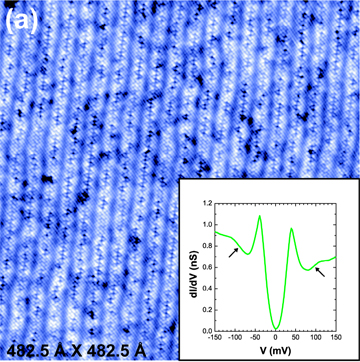 By observing events at the scale of single
atoms, Cornell researchers have found evidence that
the mechanism in high-temperature superconductors may
be much more like that in low-temperature superconductors
than was previously thought.
By observing events at the scale of single
atoms, Cornell researchers have found evidence that
the mechanism in high-temperature superconductors may
be much more like that in low-temperature superconductors
than was previously thought.
"This came as a huge shock," said J.C. Séamus
Davis, Cornell professor of physics, who with colleagues
reports the findings in the Aug. 3 issue of the journal
Nature.
Superconductors are materials that conduct electricity
with virtually no resistance. The new research may shed
light on how superconductivity works in modified copper
oxides known as cuprates, which superconduct at the
relatively "high" temperature of liquid nitrogen.
"The main expectation has been that electron pairing
in cuprates is due to magnetic interactions. The objective
of our experiment was to find the magnetic glue,"
Davis said.
Instead, the researchers found that the distribution of paired electrons in a common high-temperature superconductor was "disorderly," but that the distribution of phonons -- vibrating atoms in the crystal lattice -- was disorderly in just the same way.
The theory of low-temperature superconductivity says that electrons interacting with phonons join into pairs that are able to travel through the conductor without being scattered by atoms. These results suggest that a similar mechanism may be at least partly responsible for high-temperature superconductivity.
